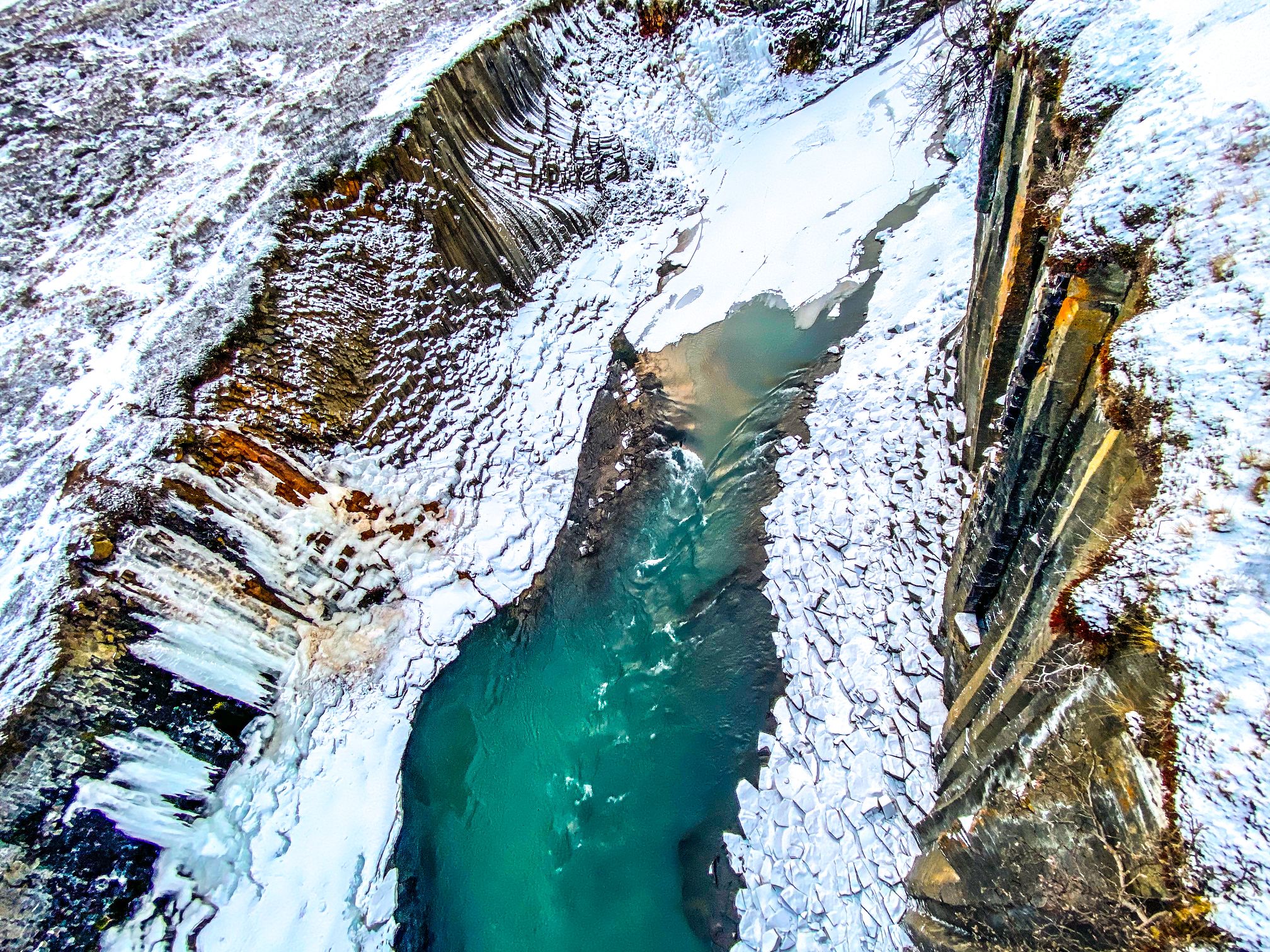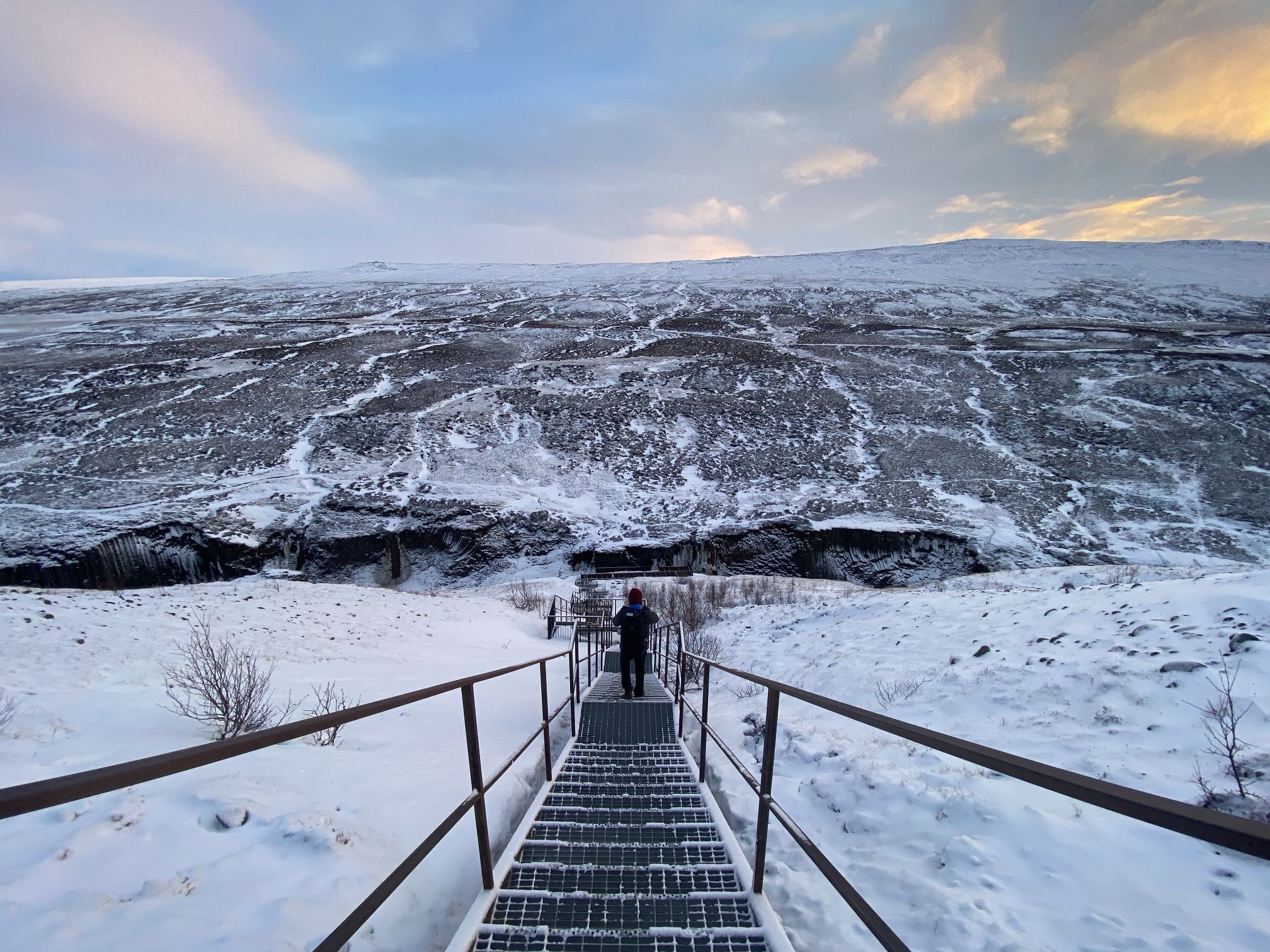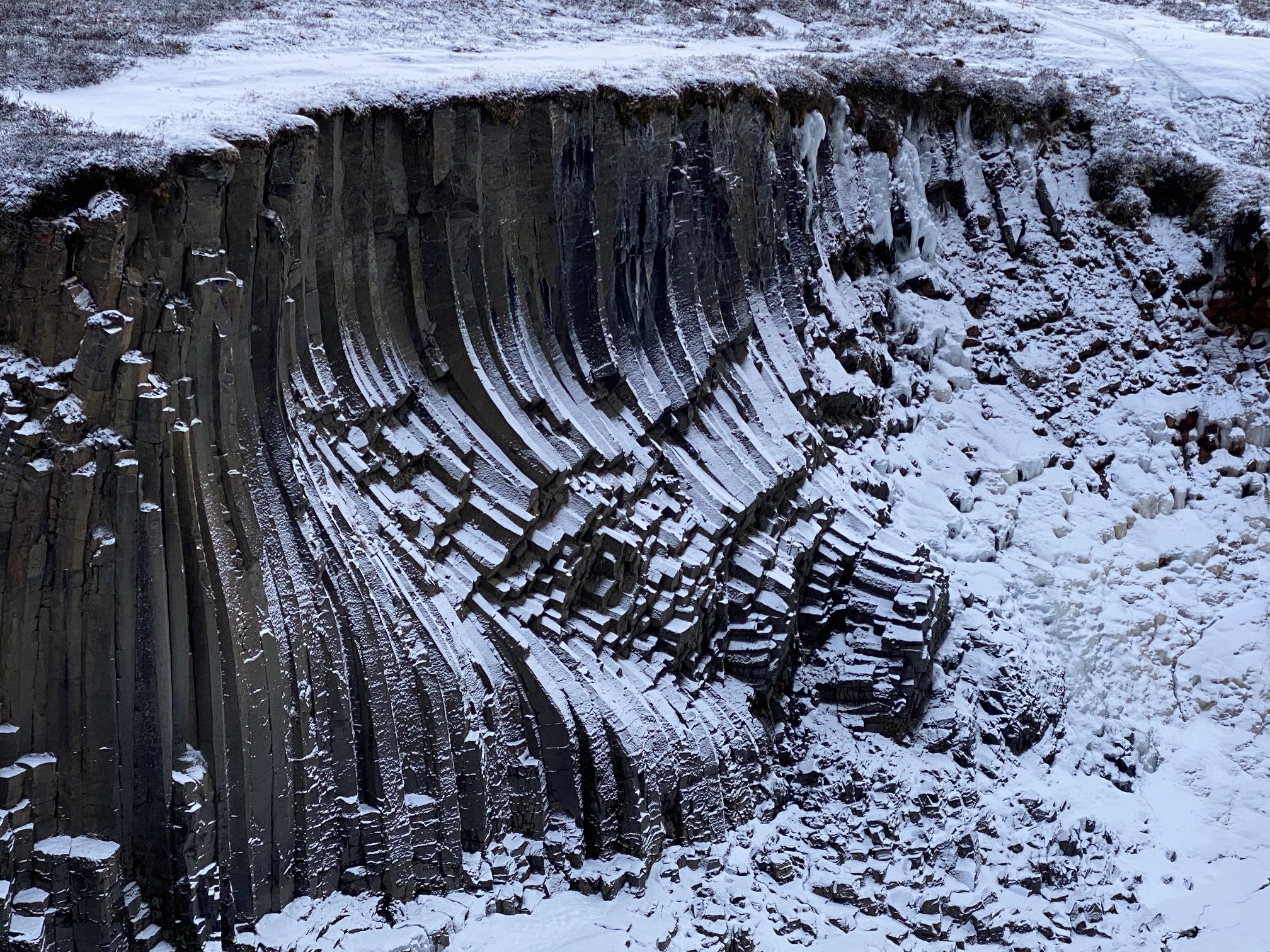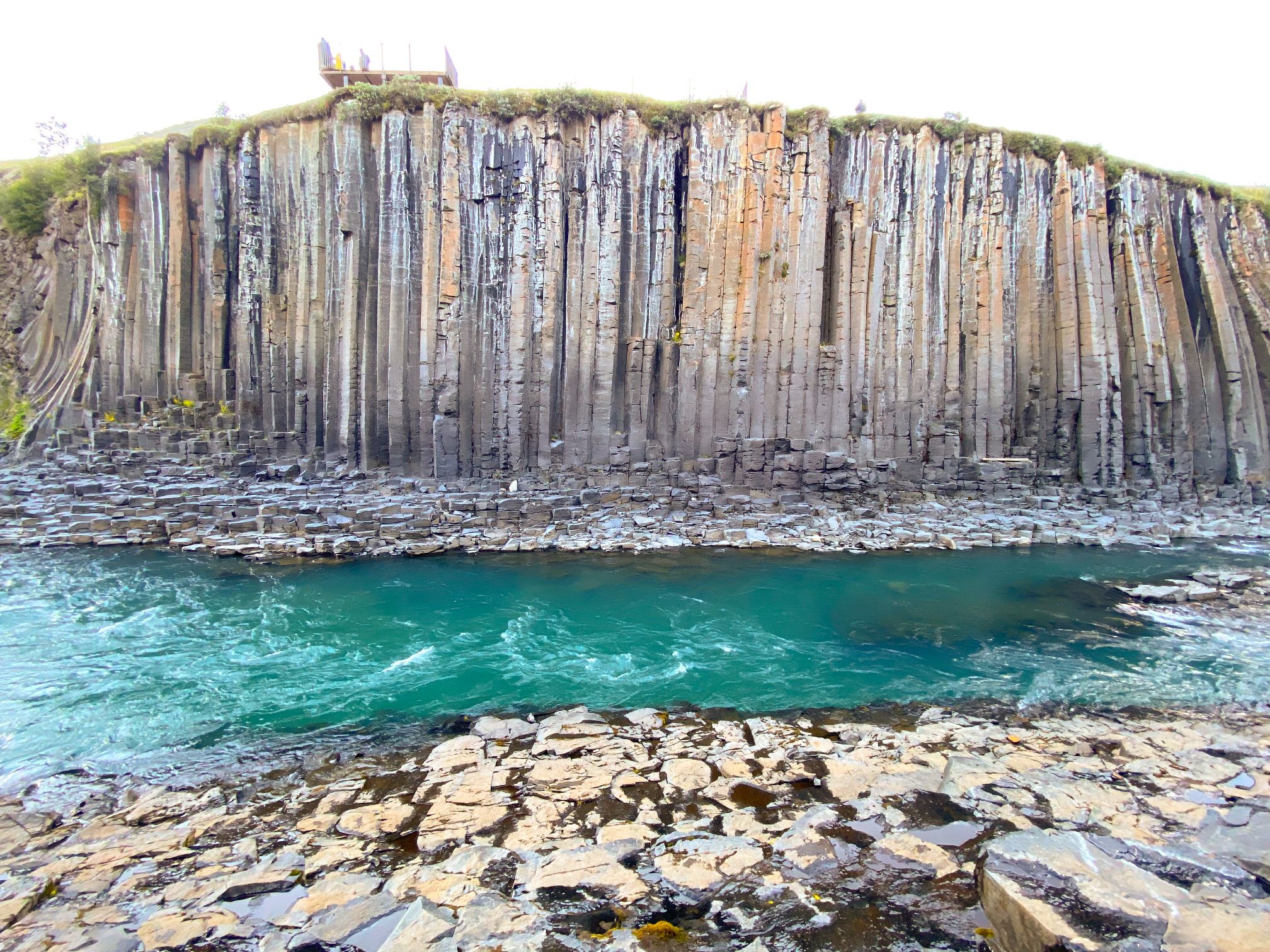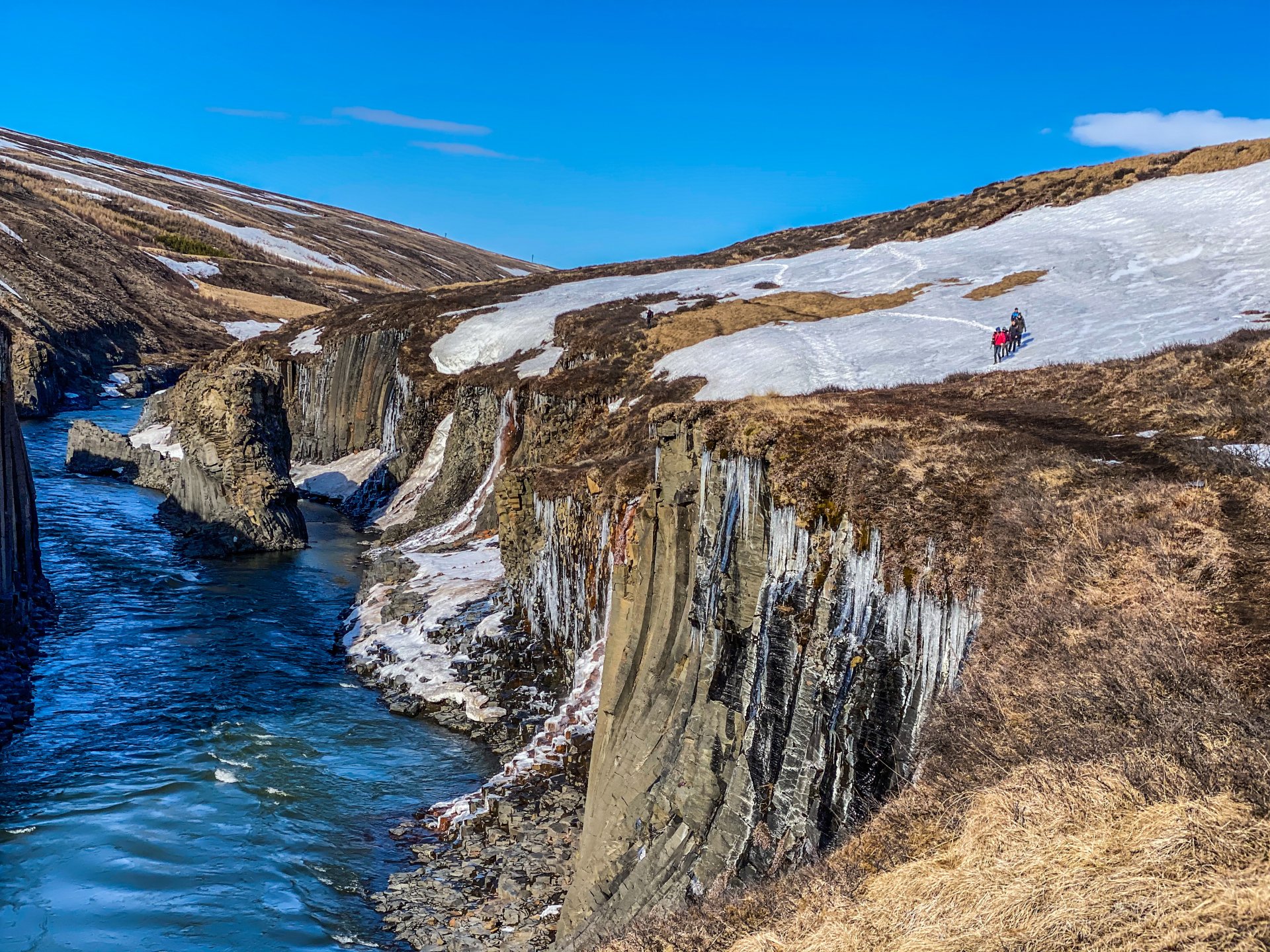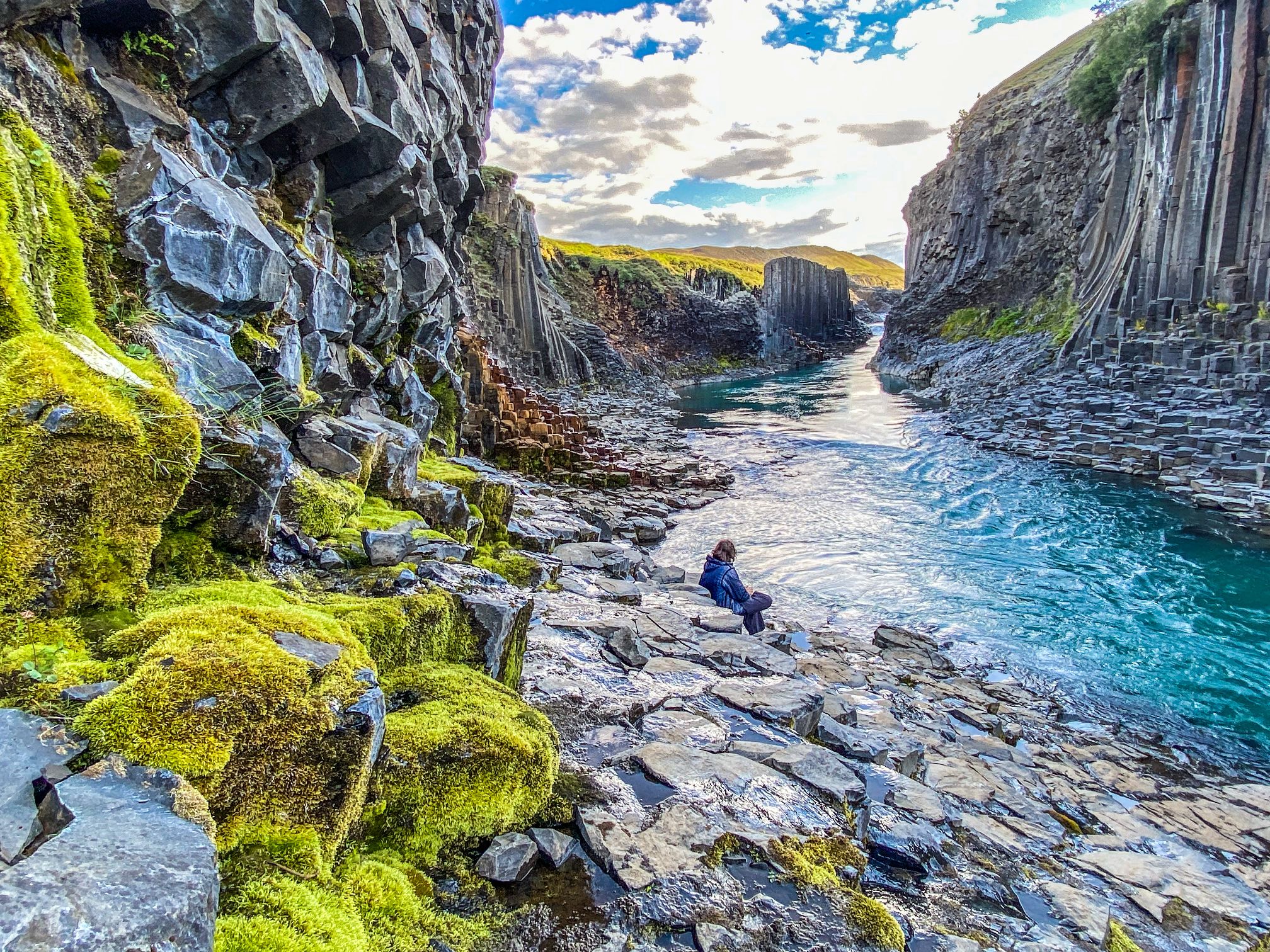WELCOME TO STUÐLAGIL CANYON AND JÖKULDALUR
THE BASALT CANYON
The section of the river which is named Stuðlagil (Basalt Columns) is considered to have one of Iceland’s largest collections of basalt columns on land. Today, the river itself is hardly comparable to former times, when it was a gushing glacial river transporting tonnes of sediment. This is because the river was re-directed with Kárahnjúkar dam. The canyon is 500 m long and with 20-30 m basalt columns on both side of the river.
The colour of the river differs between seasons, from blue – green during the summer to grey – brown when Karahnjukar dam is on overflow status and when snow melts into the river.
BASALT COLUMNS
The formation of columnar jointing happens when still magma cools down. When it cools down it contracts and separates into columnar joints, often hexagons. The separation begins where the cooling is at the most and continues as the magma cools down. Little by little the columnar joints form. They stand perpendicular on the cooling surface and therefore stand vertically on the lava surface and the diapir surface.
SUMMER – WINTER
Guest wishing to explore Studlagil should seek information on weather conditions and the situation in the canyon before they start their trip. The access to the Canyon could differs after seasons.
At Grund there are walking paths, stairs down to the bottom and the viewing platforms; increases the safety of visitors and they are usually accessible all the year. However, the road (no. 923) has a limited winter service and therefore it is important to obtain information on the road condition before visiting the site.
From Spring to Autumn the access is good.
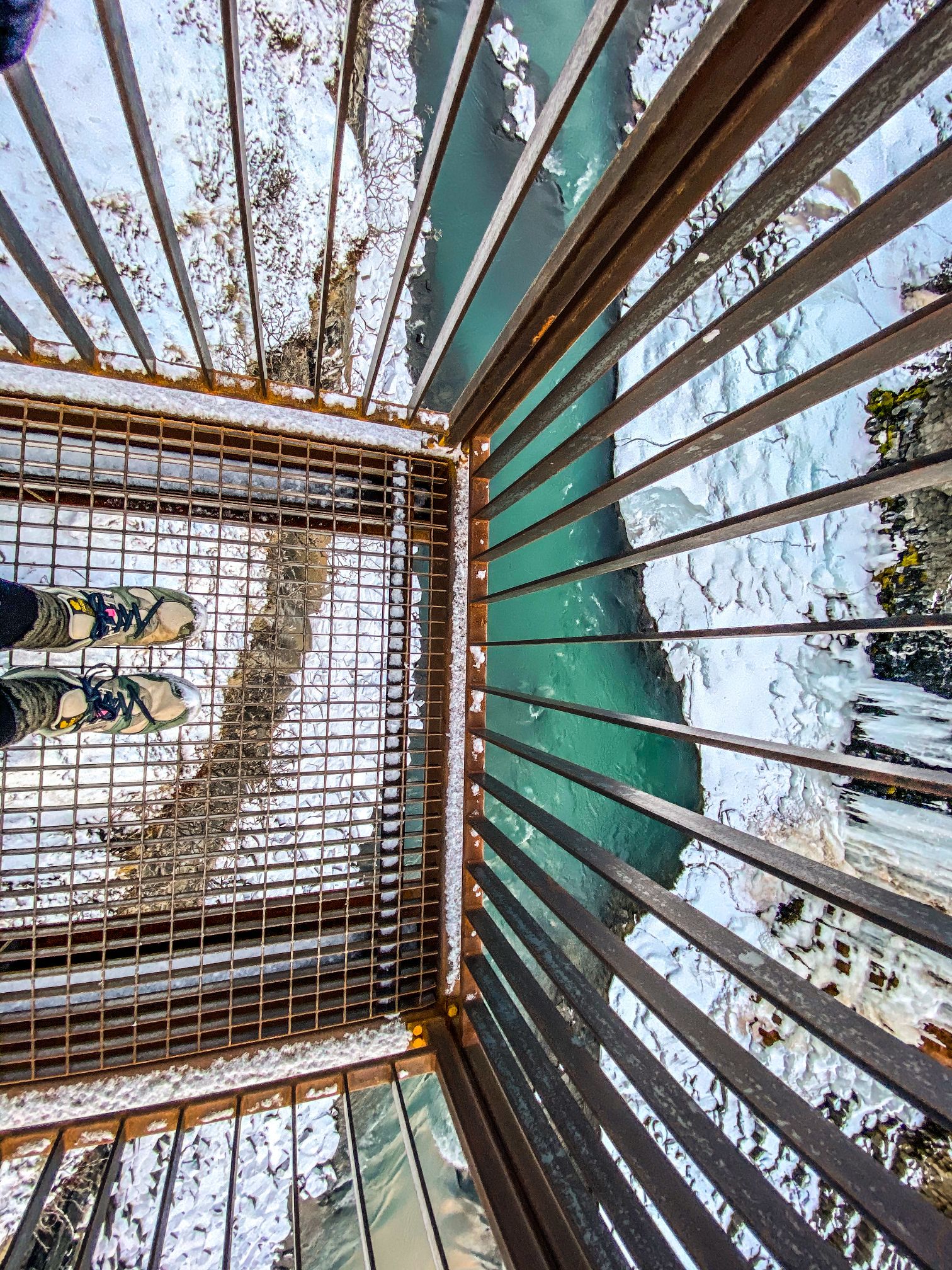
Safe Driving on Gravel Roads
Many licensed drivers have never driven on gravel roads or are inexperienced and unprepared for the unique challenges when doing so. This inexperience and lack of safety awareness result in too many fatal crashes and injuries on gravel roads in our rural areas. Always drive within the limits of your ability and experience. Do not assume that you know how to drive on all road surfaces. Be a safe driver and a cautious driver!!
What is a Gravel Road?
The road is left with a gravel surface. You have to reduce the speed while driving on a bumpy track with plenty of marble-like rocks comprising its surface. A driver has to remain focused at all times on the specific road surface he is driving on.
When travelling on road 923 Efri Jökuldalur the road is narrow with lots of twists and curves and hills that restrict your vision. You are passing through area of farming with sheep on the roads and wild birds and reindeer in the valley. You can expect to share the roads with a variety of other unique road users such as tractors, grain trucks, cyclists etc. The road is narrow but still accommodate two-way traffic, without the aid of a centre line.
Control your speed – Most accidents can be prevented simply by slowing down
Stay in track – If you’re climbing a hill or see a vehicle coming in the opposite direction be prepared to slow down and pull over to the side.
Be Cautious when Overtaking – There is a need for special caution when overtaking on narrow gravel roads. There are no road markings to indicate whether the stretch of the road is safe to overtake and you may not be aware of other roads and farm entrances from the side. Do not assume that the vehicle or farming equipment ahead of you is roadworthy or that it will indicate before entering a side road. Only overtake on a long stretch of straight road where visibility is clear and the vehicle ahead is aware of your presence.
Increased risk of roll-over -If a vehicle drifts too far to the side and the tyres go off the packed surface a roll-over can easily result from driving off the gravel surface.
Winter Driving Safety – In Iceland the weather can change in a short time, with unforeseen traffic problems. You should always check at the international information site for roads vegagerdin.is or local www.road.is and whether forecast www.vedur.is and www.safetravel.is before you start your trip.
